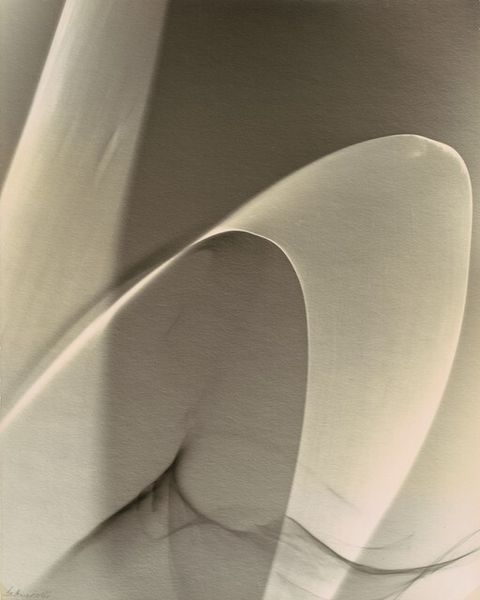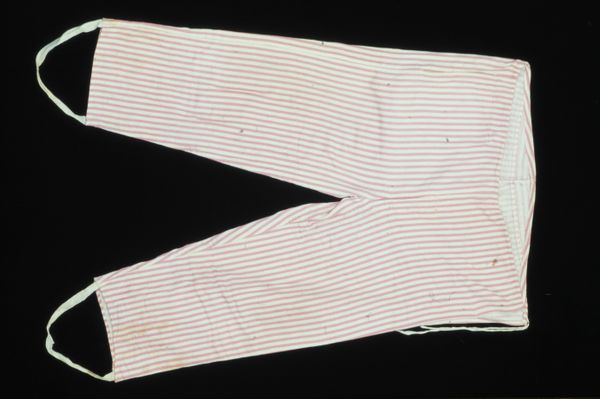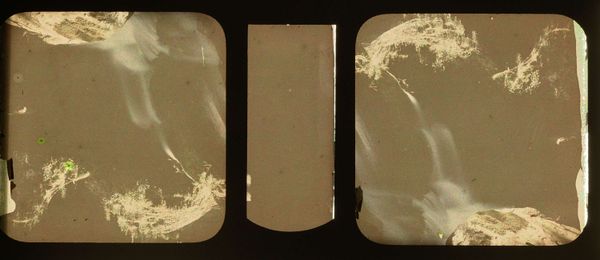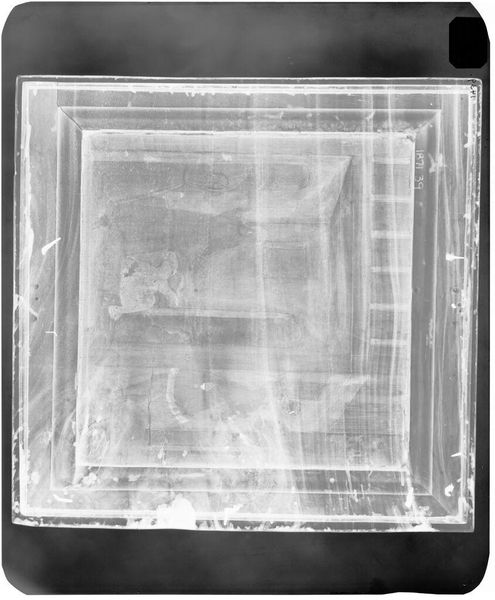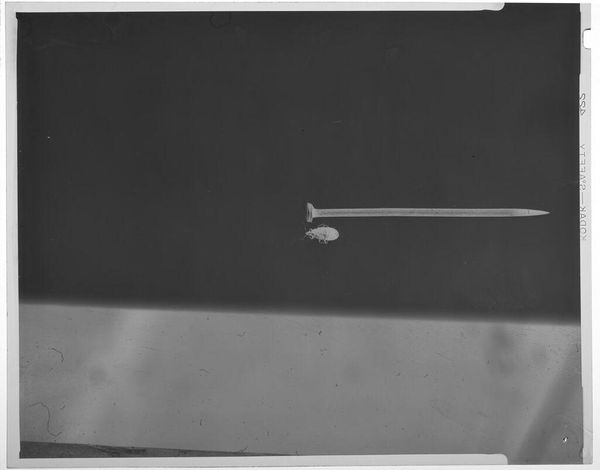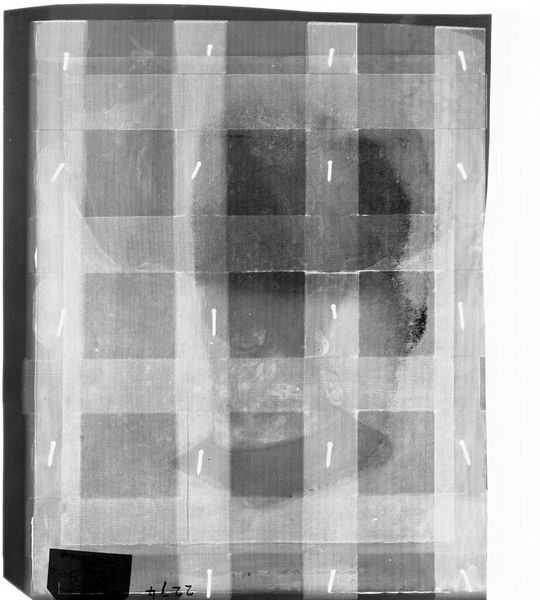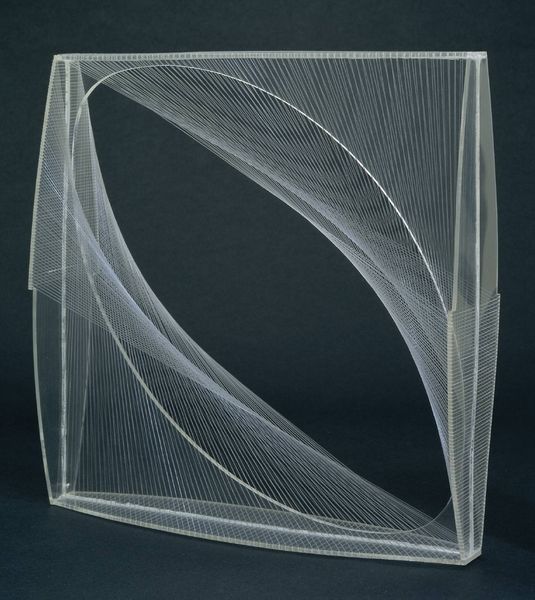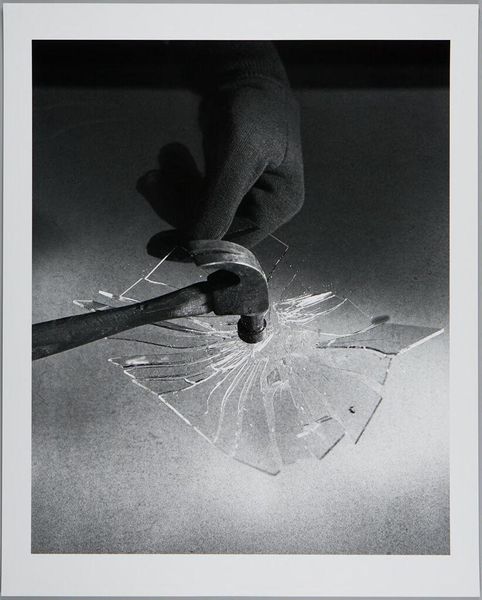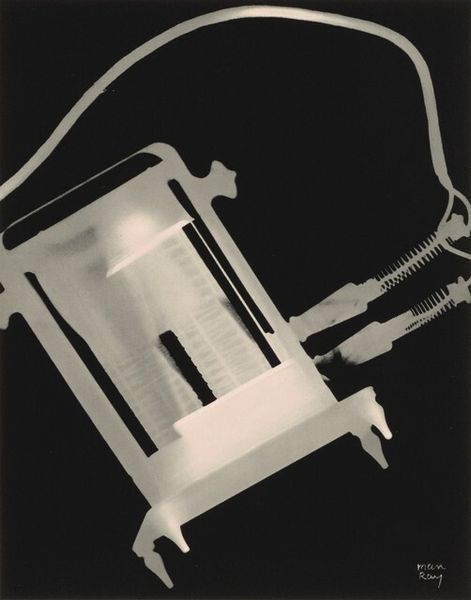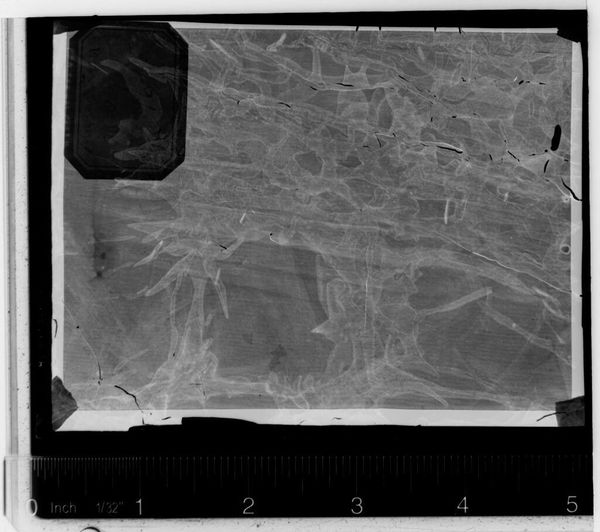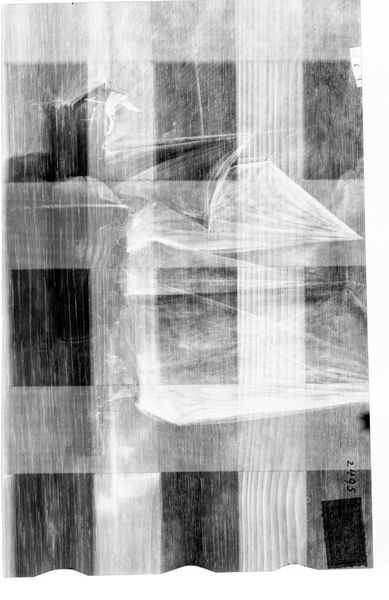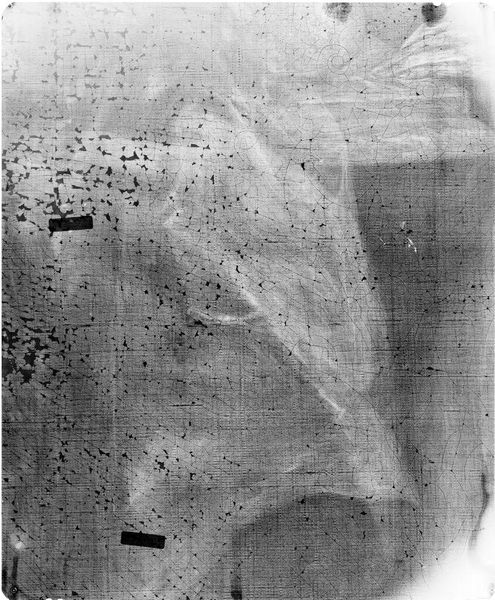
Copyright: Public domain
Curator: Immediately, I’m struck by the cool, almost clinical, atmosphere. It’s a fascinating composition, though somewhat unsettling. Editor: This is "Light painting on hinged celluloid (position 1)" a photogram created by László Moholy-Nagy in 1936. It really epitomizes his Bauhaus principles, experimenting with light and new materials. Curator: Absolutely. Observe the interplay of geometric shapes, the linear elements juxtaposed against the flowing, organic forms. How light interacts with the celluloid to create those ghostly silhouettes is brilliant. It’s an exploration of form, pure and simple. Editor: But "pure and simple" art doesn't exist in a vacuum. Moholy-Nagy was deeply concerned with the potential of art to transform society. These light experiments were about more than aesthetics; they were a utopian vision for a future shaped by technology and visual communication. Think of it against the rise of fascism—his move from Europe to Chicago. It’s a complete upheaval of everything that felt familiar. Curator: Granted, historical context is valuable, but let’s not dismiss the formal ingenuity at play. The careful balancing of positive and negative space, the subtle gradations of tone—these elements speak for themselves, creating a self-contained visual language. Editor: True, but look at it this way: Moholy-Nagy chose photography precisely because of its accessibility. He saw it as a democratic medium, capable of reaching a wider audience. The abstract shapes here can represent, perhaps, the shifting identities and realities of a world undergoing radical change, especially considering the limitations and challenges faced by artists resisting oppressive regimes. Curator: I appreciate the interpretation. Perhaps my initial cold assessment overlooks its hopeful element. Considering that time in history, these bold lines also cut through what was traditional and expected. Editor: I see "Light painting on hinged celluloid" as a beautiful fusion of form and social consciousness, urging us to reconsider the relationship between art, technology, and the world around us. Curator: It also speaks to the profound way seemingly simple techniques and shapes create emotional impact. Editor: Indeed. There is more here than meets the eye at first glance.
Comments
No comments
Be the first to comment and join the conversation on the ultimate creative platform.
